Wildlife Safari Practices and Etiquette
About Us
Safariing
Travelling
Accommodation
Equipment & Gadgets
Souvenirs
Clothing
Safari Activities
Coastal Activities
Security
Health
Where
When
Experiences
Slideshows
Evolution
Contacts
Site Map
Sub Site
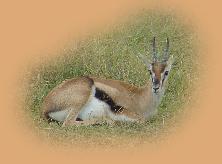 Thomson's Gazelle. Ngorongoro Crater. 1st Jul. 2002 |
The secret of safariing is to treat each one as a new experience, because they’re all unique. Don’t go with any expectations, otherwise you’re bound to come back disappointed. If you know what you want to see then instruct your driver beforehand otherwise he’ll assume your primary objective is to see the ‘Big Five’ – lion, leopard, elephant, buffalo and rhino. We’ve yet to come across a driver who’s interested in gazelle, but Thomies are one of the most beautiful animals in the world! |
|
If you want to get the most from your safari you’ll have to assist in ‘spotting’. The driver has to concentrate on where he’s going in quite rough terrain and this seriously limits what he is able spot. He has the benefit of the ‘bush telegraph’ and experience, but he’ll still miss 50% of what is there. If possible, I tend to stand in the vehicle (or sit on the roof - where it's allowed) whenever we’re out and shout at the driver (literally - as he can’t hear above the engine) when I want him to stop. This can be wearing and you’ll have to protect yourself against the jolts, the sun (hats and sun-block) etc and keep your water levels up. Don’t forget to look behind you, the game is equally likely to appear after you’ve passed it – but keep a regular eye to the front otherwise an acacia thorn will have your eye out! Game can be difficult to spot so don't be disappointed that your elephant turns out to be a termite mound or the lion that turns out to be a paper bag - as happened to one of our friends! The secret is to determine which ones move, so you may have to keep a watch on a suspect for some time before making your claim – or suffer the ribbing of your fellow travellers. That said, it is better to make 20 false calls a day if it leads to a good shot of a cheetah! |
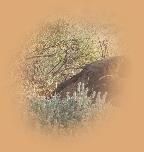 Termite mound! |
|
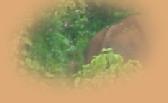 Elephant. The Salient, Aberdares. 9th June, 2003 |
||
Whatever you do try not to join a group part way through their safari. They will already have established a relationship with the driver and persuade him to track the game missing from their list. You may then spend a day chasing a rhino (and failing) at the expense of the rest of the game! It would be worth paying extra for a private vehicle to avoid this, if this is possible. |
||
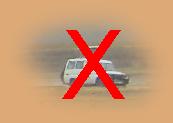 Ngorongoro Crater. 1st June, 2001. |
Don't :
|
|
Do :
|
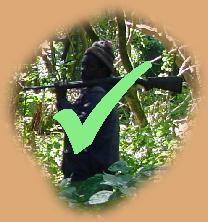 Empaki Crater. 4th July, 2002. |
|